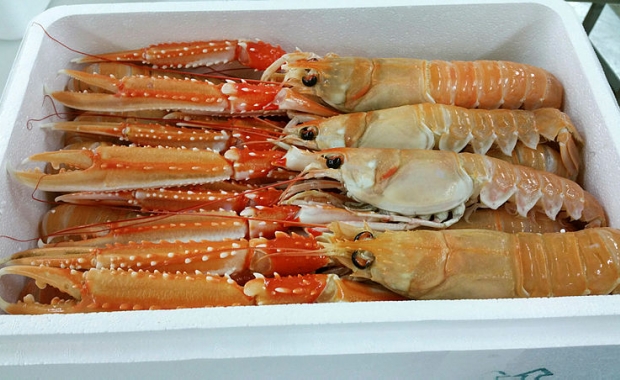The lobster catch during the last fishing year was the smallest on record. A total ban on lobster fisheries in Icelandic waters is being considered to protect the lobster population. The lobsters caught in Icelandic waters are langoustine, or Norwegian Lobsters, a slim lobster which grows up to 25 cm (10 in) long.
Fishermen were unable to catch the full quota during last fishing year, only catching 820 tons out of the total 1,500 tons recommended as a sustainable catch by marine biologists at Hafrannsóknarstofnun, the Icelandic Marine and Freshwater Institute. The catch was 2,500 tons in 2010, but has shrunken dramatically in recent years.
Jónas P. Jónasson, a marine biologist at Hafrannsóknarstofnun, told the local newspaper Morgunblaðið that the catch in recent years has been made up of increasingly older lobsters, ten years and older. Since the typical life span of langoustine is just 5-10 years, the composition of the catch suggests reproduction of the species has been extremely poor in recent years. He points out that even if we see several years of exceptionally high reproduction rates it will take years before the biomass of the species has recovered sufficiently.
The drop in renewal of the stock appears to have begun in 2005, Jónas told Morgunblaðið. The causes of the drop are not clear, but scientists have warned that crusteceans are particularly sensitive to changing ocean conditions and rising CO2 levels in the atmosphere.
While the langoustine population has collapsed in recent years most commercial fish stocks in Icelandic waters are doing very well, with cod and other commercial fish stocks in Icelandic waters at historic heights.
The lobster catch during the last fishing year was the smallest on record. A total ban on lobster fisheries in Icelandic waters is being considered to protect the lobster population. The lobsters caught in Icelandic waters are langoustine, or Norwegian Lobsters, a slim lobster which grows up to 25 cm (10 in) long.
Fishermen were unable to catch the full quota during last fishing year, only catching 820 tons out of the total 1,500 tons recommended as a sustainable catch by marine biologists at Hafrannsóknarstofnun, the Icelandic Marine and Freshwater Institute. The catch was 2,500 tons in 2010, but has shrunken dramatically in recent years.
Jónas P. Jónasson, a marine biologist at Hafrannsóknarstofnun, told the local newspaper Morgunblaðið that the catch in recent years has been made up of increasingly older lobsters, ten years and older. Since the typical life span of langoustine is just 5-10 years, the composition of the catch suggests reproduction of the species has been extremely poor in recent years. He points out that even if we see several years of exceptionally high reproduction rates it will take years before the biomass of the species has recovered sufficiently.
The drop in renewal of the stock appears to have begun in 2005, Jónas told Morgunblaðið. The causes of the drop are not clear, but scientists have warned that crusteceans are particularly sensitive to changing ocean conditions and rising CO2 levels in the atmosphere.
While the langoustine population has collapsed in recent years most commercial fish stocks in Icelandic waters are doing very well, with cod and other commercial fish stocks in Icelandic waters at historic heights.







